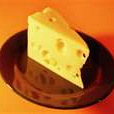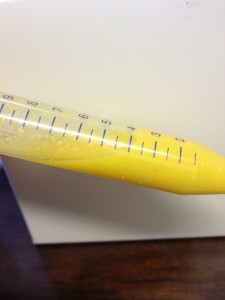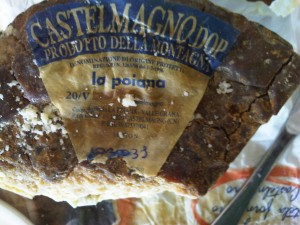FaceBook group
Please join us at our facebook group:
http://www.facebook.com/#!/groups/cheesemaking/
Regards,
Leon the Milkman
Place to stay for cheese makers
Hi, Cheese Enthusiast
If you are ever in South Africa in the Southern Cape, close to Riversdale or Stil Bay (Stilbaai) then pop over to stay at A Farm Story Guest House to experience real farm living. On the farm you are next to the dairy, there is a fully functional cheese factory and it is the point of the most Southern Battle in The Anglo-Boer War.
The house played an important part in the history of the Cape, as the stables were used as a hospital during the most southern battle in the Anglo- Boer war in 1902.
Go and check them out at www.afarmstory.co.za
http://www.youtube.com/watch?v=xrhUnPRu5xs
Cheers,
Leon the Milkman
Goodbye Tony :-(
Today I went to the funeral service of Antonio James Morrone. It was a sad day for the South African food and laboratory industry. As opposed to myself I have never heard this man say anything bad about someone else, even when listening to my rants! He was always full of concern and care for everyone else’s problems and glad to share in their joy. You could see the glint in his eyes in sharing his joy with everyone he met.
My thoughts are with his brother Michael and the rest of his family. You were all blessed with him, may you still be with him looking after you from above.
Tony we will see each other again one day – if we are too far to shake hands – wave at me and smile.
http://www.tridentinstrumentation.co.za/
Gouda wash water insight
Hi, Cheese Makers
Have you ever considered testing your normal rinse/wash water quality for gouda and other cheeses that get “washed”?
If not, maybe consider testing for more than the usual coliforms and yeast and mold. Also test pH, hardness, etc. We are so used to doing pH on the milk, but never the water – I have seen water used for wash water from 4.98 to 9.5. This will have some influence on your process and we should aim for 6 to 7 ideally. The water can easily be acidified with citric acid.
Any comments?
All the best,
Leon the Milkman
Dairy and Cheese Consultant
Cape Town, South Africa
Make your own gouda cheese:
http://cheesemaking.co.za/shop/home/17-big-cheese-making-kit-south-africa.html
How much mozzarella used in pizza shop?
Apparently – according to my sources – an average pizza shop uses about 500kg of mozzarella per week? Can anybody verify this?
Thanks,
Leon the Milkman
Alizarol SMS :-)
Client: Hi, Leon. This is an alizarol test
Leon: Super acid, do pH
Client: 6.7 pH. What does exactly mean acid? old?
Leon: Impossible, that yellow is acid milk. Could be old, or high bacterial load or chemical.
Client: OK, will check again.
Leon: Maybe used same container that citric acid was in? Must be some reason
Client: Hm! Well done! The container was the culprit! Thanks
Leon: 😉 good
Client: 🙂
May that be a lesson to you all, haha.
Out for now and have a great Monday,
Leon the Milkman
For online training with video on the alizarol test, that you can use to re-train or train new employees, please go to:
Back! :-)
Well, after losing my blog through some mistakes of mine and others, I am back blogging away to stay. Thanks for waiting 🙂
Thanks to Renier for putting the blog back up!
We’ll talk soon.
Leon the Milkman
Twitter Weekly Updates for 2010-11-09
- RT @mikefilsaime is having a Webinar Event this week. Make sure to make it. I'll be on! http://nowview.me/kLA2 #
Powered by Twitter Tools.
I had Castel Magno today :-)
What is an antibiotic rapid test?
When there is a chance of antibiotic residues passing into milk it is important to be able to test for it quickly, since milk is a highly perishable product, so action is needed quickly. Milk can also not be worked into value added products like, yoghurt or cheese when it contains antibiotics, since the added lactic acid bacteria(LAB) will not grow in the presence of antibiotics. So for the producer of these products it not only limits the possibilities for the raw milk, but in case they miss the presence of the antibiotics, it could mean big losses.
It is thus of vital importance to be able to test for antibiotics as quickly as possible – even before the milk tanker is off loaded at the factory. When antibiotic milk received from one farmer is mixed with the mikl of other producers in the bulk tank, they will hold that farmer responsible for the loss of the entire bulk tank. It is thus in the interest of farmers to make sure that they do not supply antibiotic containing milk. This can easily happen through mis-management on the farm, in the case where a long-acting antibiotic is given in palce of a short acting antibiotic. The cow will be placed back into the milking sequence before all the antibiotic is out of the system and it will contaminate the entire batch.
Twinsensor that could test for tetracyclines and beta-lactames has evolved into the Trisensor.
Trisensor is brought to you by Unisensor Germany and is the latest rapid test that tests for Beta-Lactam, Sulfamides and Tetracycline in milk. This rapid test tests for 3 different families of antibiotics mainly used by farmers to control or prevent animal bacterial diseases.
Due to their human harmfulness and in respect to EU regulations, efficient controls of these antibiotics residues in food and especially in milk are needed.
The Trisensor test kit provides a multiplex dipstick test (Lateral Flow (LF) assay) that uses specific receptors and generic monoclonal antibodies. The results are visualized at the 3 specific capture lines by the use of colloidal gold-conjugates.
In this final version of the test, a fourth reagent line has been added to the dipstick, known as a “dynamic control line”. The intensity signal of this control line will proportionally increase with the sample/reagent flow migration. Therefore it reflects the correct use of the test, excludes potential invalid results and serves also to establish a threshold value limit for each test line result interpretation.
The test takes 6 minutes to run and does not require any cleaning or sample preparation. It is able to detect Limit of Detection(LoD) the 3 antibiotics at concentrations near their respective Maximum Residue Limit (MRL) values.
The results can be interpreted either through direct visual observation of the test and control or for a more “MRL-suitable” observation and result, an optical reader (Readsensor) can be used that suppresses any subjectivity from the operator and doesn’t need any calibration.
What makes this test different from the others is that it tests for Sulfamides. When ingested by humans side effects can include dizziness, drowsiness, nausea, vomiting, difficulty breathing etc. Unfortunately many South African farmers do not test for Sulfamides in milk samples and conform to EU principles regarding Sulfamides.
[audio:Antibiotic.mp3]



